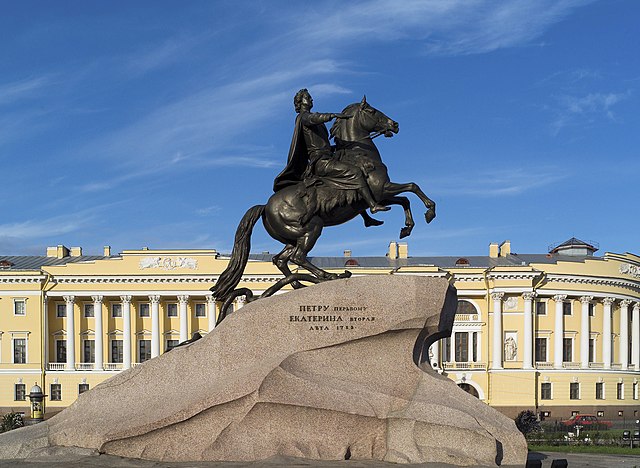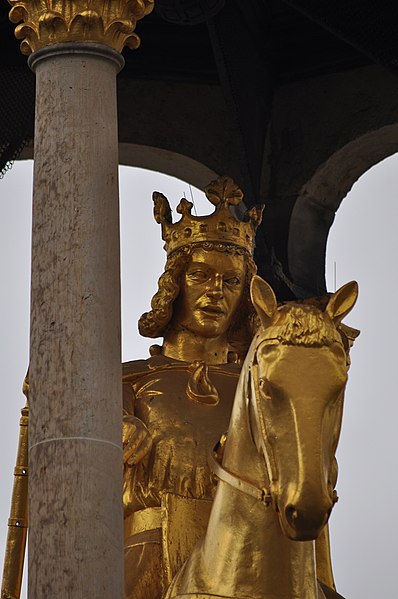The Bronze Horseman is an equestrian statue of Peter the Great in the Senate Square in Saint Petersburg, Russia. It was opened to the public on 7 (18) August 1782. Commissioned by Catherine the Great, it was created by the French sculptor Étienne Maurice Falconet. The statue influenced a 1833 poem of the same name by Alexander Pushkin, which is widely considered one of the most significant works of Russian literature. The statue is now one of the symbols of Saint Petersburg.
Bronze Horseman
Head (original) of the model after which the monument by Falconet was cast in gypsum by Marie-Anne Collot. Russian Museum, Saint-Petersburg
The Bronze Horseman, by Vasily Ivanovich Surikov
Inauguration of the Monument to Peter the Great. Engraving by A. K. Melnikov of the drawing by A. P. Davydov, 1782
An equestrian statue is a statue of a rider mounted on a horse, from the Latin eques, meaning 'knight', deriving from equus, meaning 'horse'. A statue of a riderless horse is strictly an equine statue. A full-sized equestrian statue is a difficult and expensive object for any culture to produce, and figures have typically been portraits of rulers or, in the Renaissance and more recently, military commanders.
Khosrow Parviz is standing here. On his left is Ahura Mazda, on his right is Anahita, and below is, Khosrau dressed as a mounted Persian knight riding on his favourite horse, Shabdiz, in the city of, Kermanshah, Iran
This horse head from Suasa was once part of a large equestrian monument. c. 40 AD. Walters Art Museum, Baltimore.
Bamberg Horseman (1225–1237), Bamberg
Magdeburg Horseman (1240), Magdeburg








